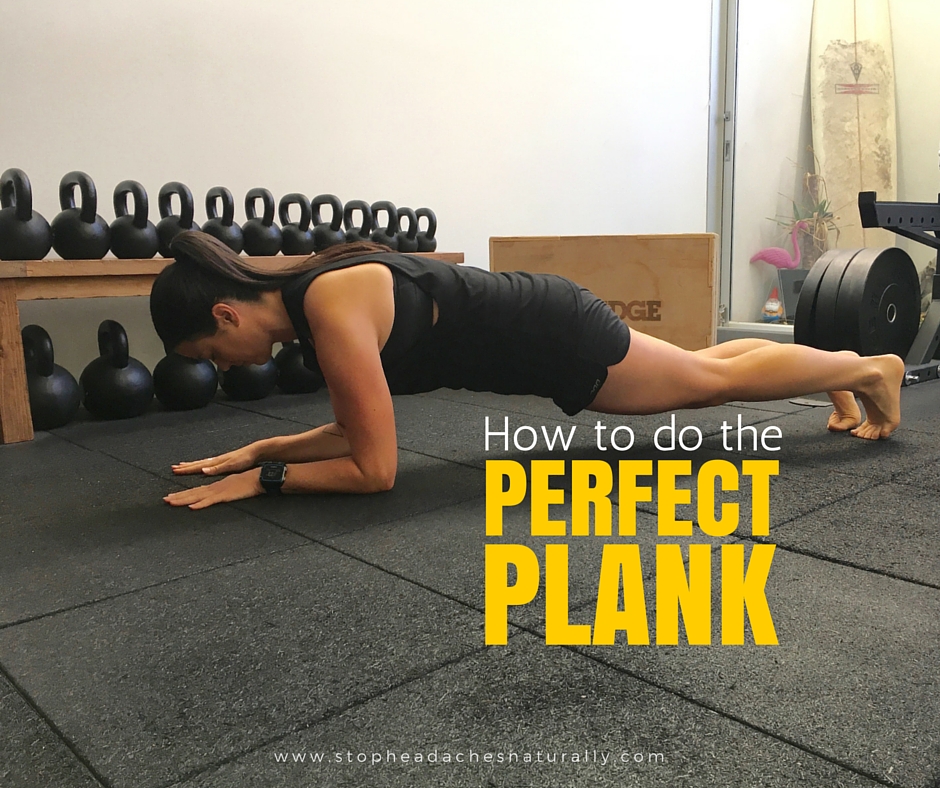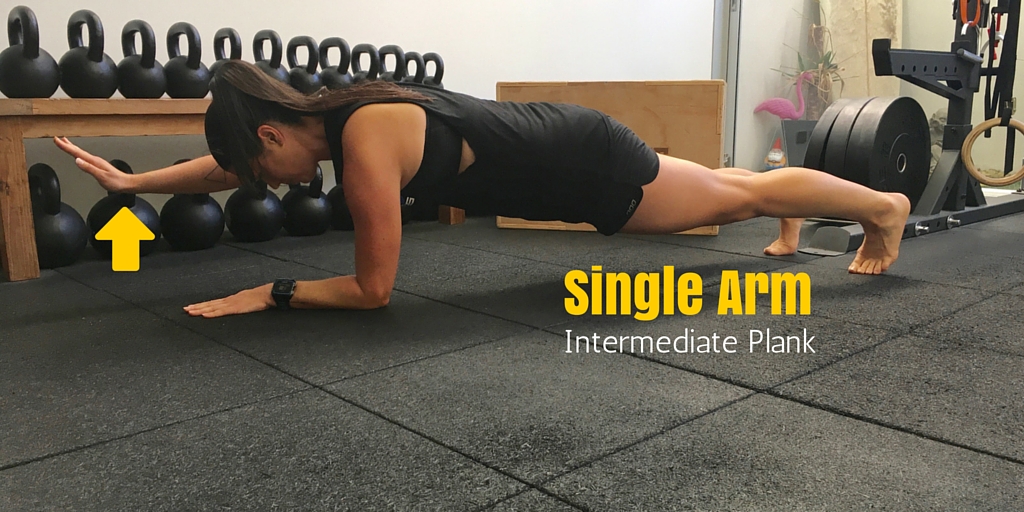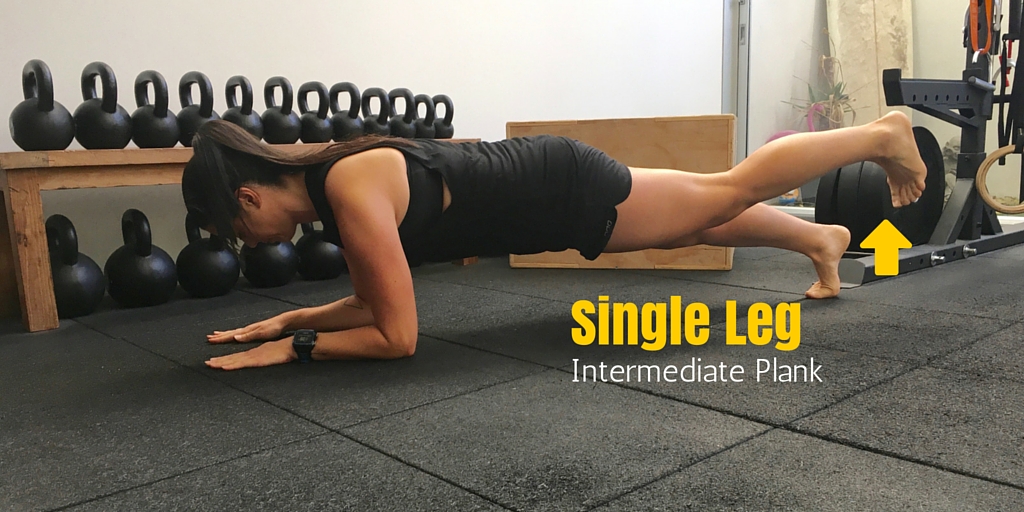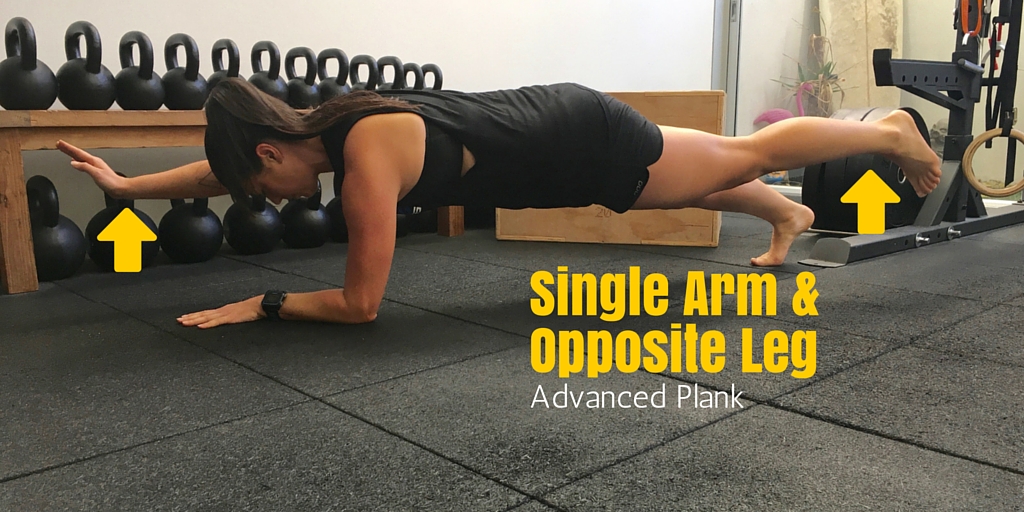The Perfect Plank

When performing the plank it is important to use the correct technique. This will allow you to get the most out of the exercise and reduce the risk of injury.
That is why I contacted Amber Johnson - Founder, Owner and Strength & Conditioning Coach at First Wave Fitness and asked her, "How do you perform the perfect plank?" Here is Ambers' response…
The plank is a brilliant exercise to learn to create and maintain tension throughout the core in a neutral spine position.
Here is how to set up your plank:
1. Setting up on your elbows, feet together, knees locked out straight and your weight evenly distributed throughout your body
2. Align elbows directly underneath your shoulders with forearms parallel, hands relaxed, palms facing down
3. From here, we want to pack our shoulders down into our ribcage and away from your ears. Without moving your forearms, imagine pulling them backwards along the floor to lock your upper body and pelvis together as one unit
4. To align your spine in a neutral position, find the best position where you can squeeze your glutes
5. Your head and neck should also be kept in a neutral position (you may wish to place a broomstick down your back to ensure correct alignment is maintained. With the stick making contact at the back of your head, upper back and glutes).
Engage your core by gently drawing the belly button in and exhaling slowly to hold a strong tension through the middle of your body. From here, take slow, small breathes in and gently exhale to maintain this tension.
When attempting the plank, you should always aim for quality over quantity. When you first set out, run through your mental checklist of form cues and aim for short intervals.
"Always aim for quality over quantity"
Initially you may wish to start with 10 seconds holds and 10 seconds rest to reset and come up again. Try to work towards 6x 10 seconds holds and gradually build the working interval as you feel more confident with your form.
Once you have conquered the 6x 10 seconds hold, a good goal is to build towards a 30 seconds quality hold. As you advance, aim for quality holds between 30-60 seconds, and eventually 60 seconds-2 minute holds.
For those who are looking to advance the plank from here and challenge their Cross Core Sling Systems try the following:
Single Arm Holds

Single Leg Holds

And the real challenge the…
Single Arm and Opposite Leg Hold

Look to progress these in the same fashion as the plank, small intervals of quality over duration. As you build in strength, build the working intervals into longer holds.
_________________________________
Amber Johnson has been working in the fitness industry now for close to 10 years. Originating from a strength and conditioning background, Amber now regularly trains for and participates in the long course and Ironman triathlon series.
After completing further studies in rehabilitation, functional movement and postural correction, Amber works with a suite of athletes both local and professional, to educate, identify and retrain imbalances in the body’s movement patterns to help them move more efficiently and effectively.
Amber’s training philosophy is about building a solid foundation of strength and stability for her athletes to maintain optimum posture across each discipline allowing the body to perform at its full potential which can be summed up in her favourite quote: “First move well, and then move often” – Gray Cook
Health Benefits Of Planking

People who spend more than 5 hours sitting each day need to do planks. Why?
Because sitting for long hours at a time weaken your core muscles which are crucial for providing support for you back and spinal column.
The weaker your core, the more prone to injuries you will be. And planks are especially helpful in countering the detrimental effects of sitting.
In addition, doing plank exercises every day will also give you other health benefits you may not have thought about:
1. Boost Overall Metabolism
2. Improve Core Performance
3. Decreased Risk of Injury To The Back & Spine
4. More Flexibility
5. Improved Posture
6. Improved Balance
7. Mental Health Benefits
It’s worth reading this article by DailyHealthPost in more detail, especially if you suffer with headaches and migraines… strengthening and stretching are two keys to overcome your pain.
What Is The Best Sleeping Posture?

We have all woken up with a stiff neck or sore back and immediately thought, “I must have slept the wrong way”.
Most people are aware that poor sleeping posture can cause neck, shoulder and back pain. However the important role that it can play in provoking headache attacks tends to go unrecognized.
Considering we spend almost a third of our life in bed, we ought to pay more attention to our sleeping posture. Perhaps you have an ergonomic chair at work but what about the mattress and pillow on your bed?
A good mattress and pillow can certainly help your sleeping posture. Mattresses and pillows also wear out and need to be replaced regularly.
However it is even more important to look at the way you lie in bed.
Although we change our position many times while we are asleep, we all have a favourite position. This is the position that we adopt automatically as we drift off to sleep, the one we continually return to during the night. Hence it is the position that we spend the most time in. Video studies have shown almost everyone is able to identify it reliably.[5b]
Do you prefer to sleep on your side, on your back or on your stomach? There is some disagreement among scientists and doctors as to whether sleeping on your side or your back is better for the spine.
However all are agreed that sleeping on your stomach is very bad for the spine and should be avoided.
Stopping sleeping on your stomach may be one of the most effective things you can do to stop your headaches. Just what it is wrong with sleeping on your stomach is discussed in the next section.
Having good sleeping posture means that when you are lying in bed in your usual position:
- Your pillow and mattress should support your head and body so that your spine retains its three natural curves, just as when you are sitting or standing.
- Your spine, and especially your neck (cervical spine), should not be twisted to one side – your shoulders and hip bones should be aligned.
The position of your arms and legs should not put any muscles in either an overly shortened or overstretched state. For example, avoid crossing your arms tightly against your chest as shown in the photo.
Awkward positions such as this, when held for hours on end during sleep, will cause or reactivate muscular trigger points and worsen existing muscle imbalances.
Our postural habits are so ingrained that we are mostly unaware of them. It is a good idea to demonstrate the way you usually lie when you go to sleep to your manual therapist and ask them to comment on any possible problem areas that they notice.
This is an excerpt from Stop Headaches Naturally | Chapter 8 - Postural Tips For Sleeping





